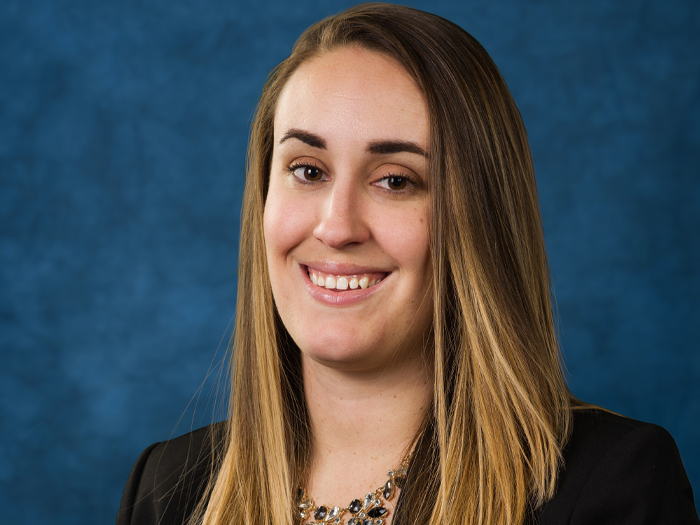The What, How and Why of Medical Roundtables for Complex Claims

In workers’ compensation, there are a handful of known risk factors that signal a complex and potentially costly claim — things like invasive surgeries, opioids, and long stays in rehabilitation. But inevitably, some claims will start accumulating costs for less obvious reasons, when the treatment initially prescribed is not particularly aggressive, but a persistent lack of recovery keeps the claim open far longer than expected.
When a claim stalls, it’s time to call in medical professionals to apply fresh clinical eyes to the case at hand.
That was the argument made by Suzy Braden, Workers’ Compensation Claims Manager, Encompass Health and JJ Schmidt, head of analytics and innovation for York Risk, during a recent presentation on the implementation of medical roundtables for complex claims at the National Workers’ Compensation and Disability Conference in early December. They outlined the purposes, challenges, and ultimate benefits of implementing medical roundtables in addition to regular standard claims reviews.
Here are a few key takeaways:
What are medical roundtables?
Medical roundtables are version 2.0 of the standard claims review, reserved for claims that have stalled out or “jumper claims” that have the potential to devolve in high-cost complex claims. As their name implies, they focus primarily on the clinical aspects of a claim and pull in medical professionals to evaluate what needs to change in a patient’s treatment plan in order to bring a claim to close. Those professionals include physicians, pharmacists and medical case managers.
“Most of us that manage workers’ comp claims aren’t medical professionals. We think we know the right treatments after seeing so many of the same injuries, but it’s helpful to get the fresh perspective of a clinician to tell us if we can do something better,” Braden said.
Unlike normal claims reviews that happen monthly and may run through dozens of claims, medical roundtables require a more intensive process and typically are done quarterly, focusing on just a handful of carefully selected claims.
How do claims get selected?
At Encompass Health, Braden and her team began by selecting claims based on drug utilization.
“For our first roundtable, we looked at morphine equivalency dose (MED). Anyone who was greater than 100 and had not recently had surgery could be a candidate for a medical roundtable,” she said.
Other candidates include claims with multiple surgeries or ones that have been open for a long period of time but have seen little activity or improvement. Schmidt said that often the claims that present the biggest issue are those that start out as medical-only but transition into lost-time payment because the injured workers has been receiving treatment but not nearing any resolution.
For their second medical roundtable, Encompass Health examined claims that were within their self-insured retention but had been open nearly a decade and were approaching $100,000 in medical spend.
“A couple of years ago we also started looking at jumper claims. What can we do to intervene early and prevent this claim from going south?” Braden said. “The roundtables provide a chance to see if it’s best, for example, for pay for surgery and 21 weeks of rehab now, or try a more conservative treatment first but risk prolonging the claim even further.”
How does the process work?
Medical roundtables do not focus on reserve amounts or legal jurisdictional hurdles. The sole objective is to review the medical aspect of the claim and determine what has to change in the treatment plan in order to either bring the claim to a conclusion or ensure it stays on track.
Adjusters and medical professionals typically come to the table with two distinct perspectives, with adjusters focused on the state regulations governing what care they can and cannot direct, while doctors are naturally focused only on the appropriateness of the treatment.
Adjusters may take it personally when one of their claims is called up for a medical roundtable. It’s important to reinforce to adjusters that this is not a criticism of their handling of the case.
“One thing we’ve learned is to make sure our adjusters understand the differences between a medical roundtable and a normal claim review. They have to come prepared to present all the facts of the case — what’s been done, what’s worked, and what hasn’t,” Braden said.
Adjusters may take it personally when one of their claims is called up for a medical roundtable. It’s important to reinforce to adjusters that this is not a criticism of their handling of the case.
“Know that the first one won’t be easy. You’re going to have to work the kinks out,” Braden said. “After our first roundtable, we had a debriefing and realized that there should be some education for the adjusters coming into the call. The goal is to find a better path forward, not criticize what’s already been done.”
What’s the objective?
Education is an important component of the medical roundtable, and a piece that is absent from a standard claims review. Braden said that roundtables should be treated like brainstorming sessions, and that conversations between adjusters and doctors should be allowed to run freely.
“Banter can be a good thing. It’s important to leave time for questions and not to rush the process, because it might mean missing out on some key insights from the doctor,” Braden said. “Even if it means we don’t get to all of the claims on the schedule, it’s beneficial because inevitably adjusters will come across the same injuries and the same claim challenges again in the future, and now they’ll have a better idea of how to navigate those.”
The ultimate goal, however, is to walk away from the meeting with a clear action plan in place that will either move treatment forward or find some alternative path to close the claim.
“Sometimes the legal hurdles can’t be overcome, but in two or three cases so far we have been able to use the input of our medical professional to adjust treatment for injured workers,” Braden said.
“We’re dealing with patients who have been out of work, they’re not getting better. Being able to bring them back some quality of life is why we do these.” – Suzy Braden, Workers’ Compensation Claims Manager, Encompass Health
In once case, for instance, a patient suffering from chronic back pain was not seeing any improvement, but utilization review had denied a request for a discogram — in invasive X-ray procedure used to examine injured discs in the spine after other treatment like medications and physical therapy have failed.
“We felt that the request was justified and having that confirmed by another physician in the call made us more comfortable with overriding that denial and approving a discogram anyway,” Braden said.
In another case, a woman with a hip injury had received multiple deep injections at the site of the injury, and though follow-up MRIs showed healing, the woman was still reporting high levels of pain and did not seem to be progressing. The adjuster and case manager we ready to throw in the towel, and another medical professional agreed they had done everything they could to that point — but one more injection might just do the trick.
“Sure enough, we had her receive one more injection, and she started to improve dramatically. She was back to work within a few weeks and was able to back off the pain medication she’d been taking,” Braden said. “That’s the most important outcome of these roundtables. We’re dealing with patients who have been out of work, they’re not getting better. Being able to bring them back some quality of life is why we do these.” &











